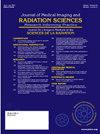计算机断层扫描部门的时间限制和工作量。
IF 1.3
Q3 RADIOLOGY, NUCLEAR MEDICINE & MEDICAL IMAGING
Journal of Medical Imaging and Radiation Sciences
Pub Date : 2024-12-06
DOI:10.1016/j.jmir.2024.101799
引用次数: 0
摘要
导语:计算机断层扫描(CT)的日益普及增加了放射技师的工作量,这可能会增加诸如压力、工作不满以及潜在的健康和安全问题等风险。本研究旨在评估组织、空间和时间因素对CT单元程序和工作量的影响,强调患者安全和放射技师的福祉。解决时间压力和优化工作场所人体工程学对于保持效率和质量之间的平衡至关重要,确保现代医学成像单位的安全实践。方法:本研究在瑞士一所大学医院CT科室进行,采用患者安全系统工程倡议(SEIPS)模型分析放射医师的工作流程和时间限制。观察和任务分析用于收集数据,包括放射技师执行任务的时间和地点。结果:CT科放射技师工作流程复杂,涉及多项任务。整个过程从26到41分钟不等,但机器时间(在CT室内花费的时间)从10到16分钟不等。该研究确定了工作流程中的低效率,即花费在患者准备上的时间和不合适的机器时间率。部门的布局,包括准备区域的有限空间,对放射技师来说是人体工程学的挑战。组织因素,如调度实践,也会影响工作流。检查时间因扫描类型和患者而异,导致时间压力和潜在的安全问题。结论:该研究强调了在CT检查中需要更现实的时间分配,以提高患者和放射技师的安全性。建议包括延长机器时间率,根据CT类型调整检查时间,并指定一名专门的放射技师进行订单审查。改善工作环境以适应人体工程学的需要也是至关重要的。解决这些问题可以提高CT部门的效率和安全性,使患者和放射技师都受益。对实践的启示:医疗机构应考虑这些研究建议,以提高CT部门的效率和安全性。通过实施建议的改变,如调整CT时间率和优化工作环境,可以提高放射技师的满意度和患者的安全性,最终实现更安全、更有效的CT服务。本文章由计算机程序翻译,如有差异,请以英文原文为准。
Time constraints and workload in the computed tomography department
Introduction
The escalating use of Computed Tomography (CT) has promoted higher radiographer workload, which can contribute to an increase of risks such as stress, job dissatisfaction, and potential health and safety issues. This study aimed to assess the impact of organizational, spatial, and temporal factors on procedures and workload in a CT unit, emphasizing patient safety and radiographer well-being. Addressing time pressure and optimizing workplace ergonomics are crucial in maintaining a balance between efficiency and quality, ensuring safe practices in modern medical imaging units.
Methods
The study was conducted in a Swiss university hospital CT unit and employed the Systems Engineering Initiative for Patient Safety (SEIPS) model to analyse the radiographers' workflow and time constrains. Observations and tasks’ analysis were used to collect data, including timing and location of tasks performed by radiographers.
Results
The radiographers’ workflow in the CT department is complex, involving multiple tasks. The entire process spans from 26 to 41 min but the Machine-Time (time spent inside the CT room) ranged from 10 to 16 min. The study identified inefficiencies in the workflow, namely in time spent on patient preparation and unsuited machine-time rate. The layout of the department, including limited space in the preparation area, contributing to ergonomic challenges for radiographers. Organizational factors, such as scheduling practices, also impacted workflow. The examination durations varied by type of scan and patient, leading to time pressure and potential safety concerns.
Conclusions
The study highlighted the need for more realistic time allocation in CT examinations to improve patient and radiographer safety. Recommendations include extending machine-time rate, adapting examination durations based on the type of CT, and assigning a dedicated radiographer for order review. It is also crucial improving the working environment to accommodate ergonomic needs. Addressing these issues can enhance the efficiency and safety of CT departments, benefiting both patients and radiographers.
Implications for Practice
Healthcare organizations should consider these study recommendations to improve the efficiency and safety of CT departments. By implementing the recommended changes, such as adjusting CT-time rate and optimizing working environments, radiographer satisfaction and patient safety can be increased, ultimately leading to safer and more effective CT services.
求助全文
通过发布文献求助,成功后即可免费获取论文全文。
去求助
来源期刊

Journal of Medical Imaging and Radiation Sciences
RADIOLOGY, NUCLEAR MEDICINE & MEDICAL IMAGING-
CiteScore
2.30
自引率
11.10%
发文量
231
审稿时长
53 days
期刊介绍:
Journal of Medical Imaging and Radiation Sciences is the official peer-reviewed journal of the Canadian Association of Medical Radiation Technologists. This journal is published four times a year and is circulated to approximately 11,000 medical radiation technologists, libraries and radiology departments throughout Canada, the United States and overseas. The Journal publishes articles on recent research, new technology and techniques, professional practices, technologists viewpoints as well as relevant book reviews.
 求助内容:
求助内容: 应助结果提醒方式:
应助结果提醒方式:


